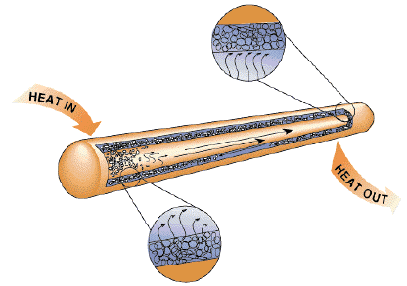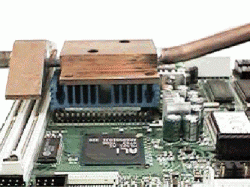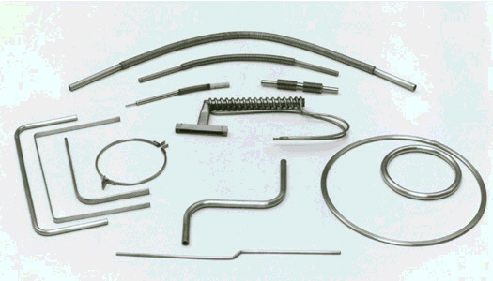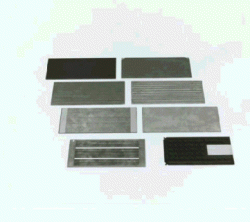Chemical and Process Engineering Resources

Laptop Thermal Control
Heat pipes have proven to be the excepted means of providing thermal control in notebook and Mobil PCs systems. Heat pipes can move and dissipate CPU generate heat selectively throughout the system without affecting temperature sensitive components. Low wattage heat pipes (under 20 watts) have standardized input plates to the heat pipe. The connection to the heat exchanger via the heat pipe can have any number of configurations to accommodate component placement, multiple power ranges and fan options.
The heat pipe solutions for thermal control at this level is a component and overall systems requirement. Not only do the heat pipes take on a different configuration with multiple heat pipes and cooling fins, but also airflow becomes the critical design factor. Heat pipes designed to move 75 watts are usually flat with fin stacks from three to six inches, in many cases with fins mounted on each side of the CPU input pad. Input pads are standard using stand-offs, transition sockets, and bolster plates on the bottom of the PC board. The spring clips used on the fan/heat sink combination won’t work here. Airflow management is important in the overall efficiency of the heat pipe and should be calculated along with the intended heat pipe design.
 |
| Figure 3: Heat Pipe on a 500 MHz System |
Thermal solutions are normally designed with multiple heat pipes, dedicated airflow and maximum input area. Fins stacks typically extend over both sides of the CPU. Input attachment to the CPU is with stand-offs, transition sockets or bolster plates.
The 500MHz operating system shown in Figure 3 uses two thermal products, heat pipes to transfer the CPU heat (100 to 300 watts) and a second internal or external cooling source. Input power is generated from multiple CPUs and components with single or multiple heat pipes. Cooling temperatures on the output range from -0° C to - 40° C. This system requires thermal isolation because of dewpoint considerations.
Flexible Solutions
Heat pipes are manufactured in a multitude of sizes and shapes. Unusual application geometry can be easily accommodated by the heat pipe’s versatility to be shaped as a heat transport device. If some range of motion is required, heat pipes can even be made of flexible material.
Two of the most common are:
Constant Temperature: The heat pipe maintains a constant temperature or temperature range.
Diode: The heat pipe will allow heat transfer in only one direction.
 |
| Figure 4: Flexible Style Heat Pipes |
Mega Flats
Flat heat pipes are typically used for cooling printed circuit boards or for heat leveling to produce an isothermal plane. Mega flats are several flat heat pipes sandwiched together.
 |
| Figure 5: Flat Style Heat Pipe Materials |
Some of the flat heat pipes manufactured are:
XY Mega Flats: Surface maintained within .01° F isothermal with concentrated load centers. 6" X 6" Mega Flat: Dissipated 850 watts from a printed circuit board.
Weight Reduction Mega Flats:
Standard - aluminum construction.
Lightweight - ½ the weight of aluminum.
Very light weight - 1/3 the weight of aluminum.
SEM C and SEM E Mega Flats in stock. Low and light weight coefficient of thermal expansion (CTE) Mega Flats - any CTE from 2 to 10. Alloy H: 70% more conductive than, or 40% less weight than copper clad invar.
Cost Effectiveness of Heat Pipes
The cost of heat pipes designed for laptop use is very competitive compared to other alternatives. Cost is partially offset and justified by improved system reliability and the increased life of cooler running electronics. Heat pipes, in quantity, cost a few dollars each while an entire cooling system will cost between $5 - $10 in production quantities, depending on the final design. Standard design products are available to reduce cost even further. Heat pipe manufacture has been a difficult area to compete in. Simple in concept, but difficult to apply commercially, the heat pipe is a very elusive technology & holds the key to the future of heat transfer and its allied applications.
Quick note from the admin: **This article was graciously submitted to www.cheresources.com for publication by Shankara Narayanan K.R. from Bangalore, India. He has presented this paper at national seminars in India. The author can be reached for questions/comments at k_r_shankar_nar"at symbol"hotmail.com
 FB
FB

0 Comments